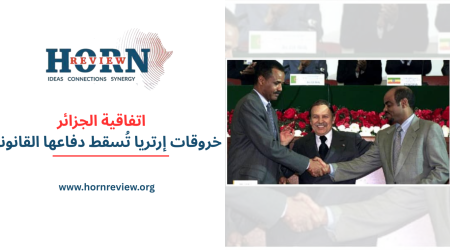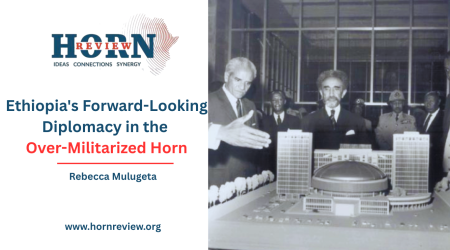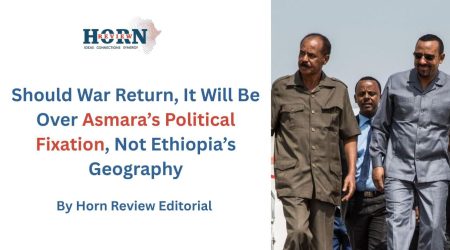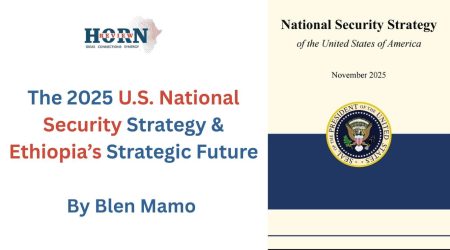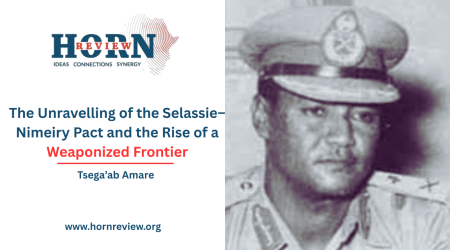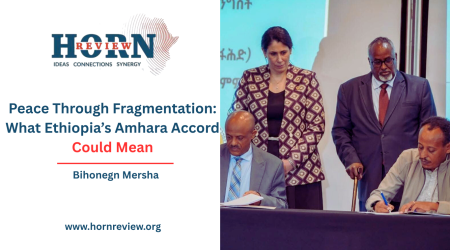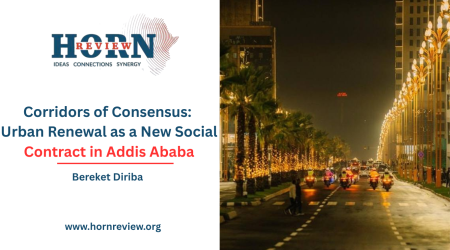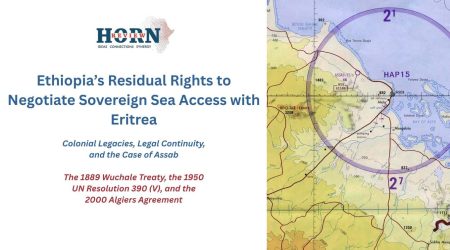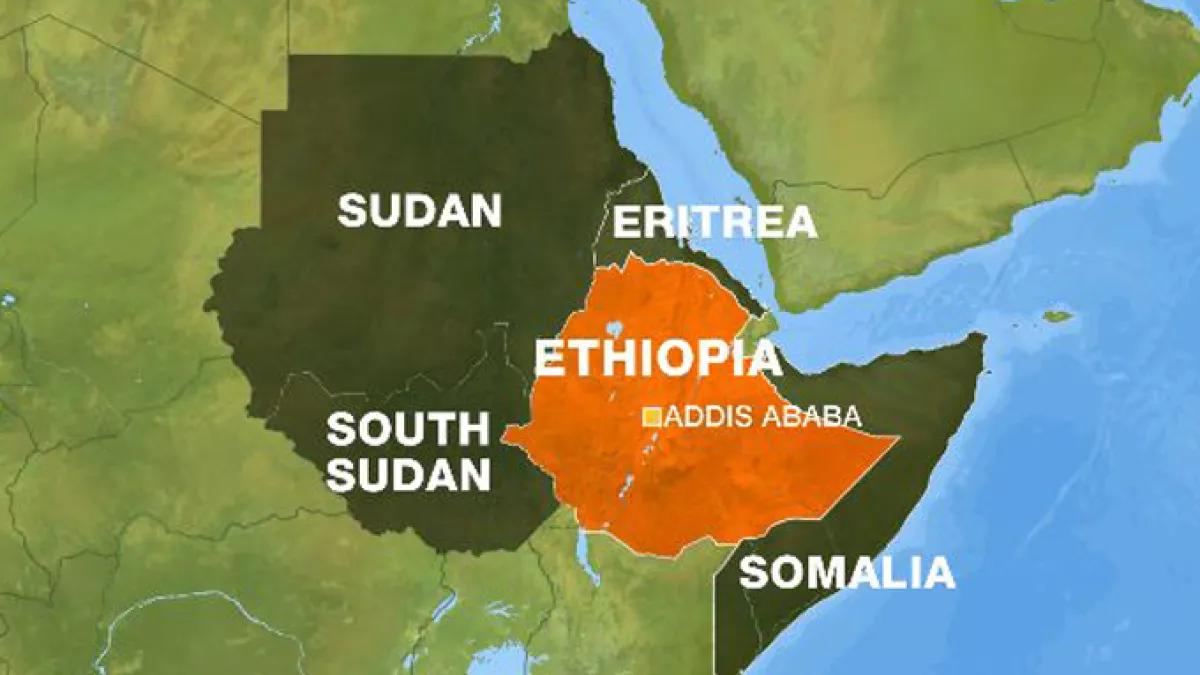
28
Jul
Between Confrontation and Compromise: Ethiopia’s Strategic Dilemma with Eritrea and Sudan
Ethiopia, Eritrea and Sudan are entangled in a volatile triangle of mistrust and shifting dynamics putting the Horn of Africa in critical juncture. The peace that followed the 2018 agreement which ended decades of animosity between Ethiopia and Eritrea, is now deteriorating. Ethiopia’s intense and desperate desire for independent access to the Red Sea, which Eritrea views as a direct existential threat to its territorial integrity is at the core of this rekindled tension. Tensions have escalated since Eritrea intervened in the Tigray conflict, leading Eritrea to accuse Ethiopia of destabilizing its regime by supporting and harboring Eritrean opposition movements which was highlighted by a well-publicized conference for anti-Asmara groups held in the Ethiopian capital in early 2025.(Chatham House, 2025)
Sudan is facing a brutal civil war involving the Sudanese Armed Force (SAF) and Rapid Support Forces (RSF), which has turned into a proxy conflict between regional powers. The Sudanese civil war, which has destabilized neighboring countries, has also displaced millions of people.
Armed conflict, economic disruption and the refugee crisis are straining resources and intensifying already existing tensions in countries like Chad, Ethiopia and South Sudan. The involvement of regional actors like the United Arab Emirates and Egypt further complicates the conflict and its effect on the area. Although Sudan has a long-lasting disagreement with Ethiopia regarding the fertile Al-Fashaga borderlands, Sudan’s military leader, General Abdel Fattah al-Burhan employs risky but practical calculation. His collaboration with Eritrea has significantly deepened, involving not only agreements to share intelligence but also transfer of supplies and weapons from Eritrea to SAF to combat common adversaries, disregarding international sanction which was the UN embargo on Darfur in the name of pursuing shared strategic goals (United Nations Panel of Experts on Sudan, 2025). However, Al-Burhan is in charge of a state that is on the verge of collapse and reliant on stable trade routes and future electricity imports from Ethiopia. The reliance will likely limit how far Sudan is willing to engage if a conflict arises between its two powerful neighbors.
A direct military clash between Ethiopia and Eritrea no longer seems distant; it has become an urgent threat. There is a major risk that this conflict will exaggerate into a larger regional conflict. Additional players like Egypt, Sudan and other proxy groups might be attracted if a full-scale conflict is to exist, further destabilizing the Horn of Africa and resulting in an intricate multi-faceted confrontation. According to intelligence reports and satellite imagery from early 2025, both countries have forward-deployed significant military forces to the vulnerable areas along their border. Eritrea seems to have mobilized long-range artillery and mechanized infantry near Zalambessa and Irob discrete. In response, Ethiopia has repositioned elite Republican Guard units northward, strengthening its defense (Jane’s Defense Weekly, 2015).
Eritrea fears that Ethiopia may make a desperate attempt to take control of the port of Assab. Meanwhile, Ethiopia defends its own military response by claiming that Eritrea’s support for remnants of the Tigray People’s Liberation Front (TPLF) and armed groups near Humera areas is an attempt to sabotage the 2022 Pretoria Peace Agreement.
This regional crisis, which does not exist in vacuum, is influenced by several external rivalries. The main international players are the Gulf nations, whose financial and military support has the power to either intensify or end the conflict. Together with Ethiopian Prime Minister Abiy Ahmed, the United Arab Emirates has built a strong partnership, while being major supporters of the RSF in Sudan, establishing a powerful axis. Conversely, Egypt and Saudi Arabia have supported Eritrea and Sudan’s SAF due to the long-standing dispute over the Grand Ethiopian Renaissance Dam (GERD), which makes an alliance with Ethiopia’s northern enemies strategically appealing for Egypt. (Al Jazeera Centre for studies, 2025) A major source of regional tension, particularly between Ethiopia and Egypt is still the Grand Ethiopian Renaissance Dam (GERD). Egypt views the dam as an existential threat to its water security and has attempted to form alliances with nations that oppose Ethiopia’s stance on the dam. Regional rivalries are still fueled by the lack of a legally binding agreement on the filling and operation of the dam.
global powers are increasingly concerned. The United States has tried to defuse the Sudanese conflict by imposing sanctions on both al-Burhan and RSF leader Hemedti, but its diplomatic power is limited. China has subtly called for moderation because it stands to lose the most from a regional conflict due to the substantial investments in Ethiopian infrastructure. Meanwhile Russia keeps up its opportunistic diplomacy, seeking to increase its influence by building relationships with military-led governments in Eritrea and Sudan.
Ethiopia may have to deal with a multifront strategic nightmare if Sudan and Eritrea coordinate their military operations. The most likely scenario is rapid armored attacks by Eritrea via Afar and Tigray, aimed at the vital A1 highway that links Addis Ababa and the port of Djibouti. Lighter infantry could then strike via the Zalambessa corridor to disrupt supply routes and encircle Ethiopian forces. Ethiopia would have to spread its resources and engage on two fronts if Sudan gathers armor and artillery along Al-Fashaga border, simultaneously This external pressure would be compounded by ongoing internal conflicts in Ethiopia.
Operating in Oromia, the Oromia Liberation Army (OLA) could take advantage of the situation to support external enemies. With elite federal units deployed north, the OLA could have more leeway to carry out sabotage operations against infrastructure, disrupting transport and communication networks. Even on a small scale, such measures could heighten investors’ fear and provoke urban disturbances, further putting Ethiopia’s unity to the ultimate test.
Pathways to De-escalation
To prevent catastrophic conflict, there needs to be more than just military deterrence, a daring and all-encompassing diplomatic effort focused on the “Grand Bargain” for the region is needed. This effort should be spearheaded by the African Union, with strong support from the UAE and Saudi Arabia, who possess the exceptional capacity to exert pressure on their regional allies. First, the issues of sea access need to be directly addressed by proposing a long term lease of the port of Assab to Ethiopia, to be run as a joint venture with Eritrea. This arrangement would provide Ethiopia with a critical economic lifeline while Eritrea gets a sizable share in regional trade and its sovereignty being honored.
Second, a larger package of economic integration needs to be connected to this port agreement. This could include long-term, fixed price energy contracts for both Eritrea and Sudan to receive power from the GERD, in order to establish an interdependent economic ecosystem where collaboration is more profitable than conflict. Third, the ongoing border disputes between Sudan and Ethiopia need a final resolution through the clear demarcation of the Al-Fashaga boundary, mediated by the African Union. A multi-billion-dollar agricultural development fund, financed by Gulf states, should support this process in order to invest in region’s growth.
Ethiopia’s pathway to prevail in war is inevitable
Ethiopia’s survival and success will depend on implementing a swift, multi-layered strategy of national resilience and strategic isolations of its enemies if war becomes inevitable. This calls for a full military mobilization of forces to strengthen the northern front against any Eritrea assaults and to protect the essential Djibouti corridor which is crucial for the nation’s economy. Seizing the early initiative would require preemptive intelligence operations to interfere with enemy command and control.
In order to mobilize its diverse population, the government needs to launch a national unity campaign, presenting the conflict solely as a defensive war for sovereignty. This effort must be complemented by a strategic political approach to prevent the opening of crippling internal fronts: the active Fano insurgency in the strategically important Amhara region must be immediately neutralized, and the OLA in Oromia must be contained through force and political concession. Additionally, it should carefully maintain its tenuous peace with the TPLF, reinforcing the Pretoria agreement to ensure that Tigray serves as a solid buffer or even a tactical ally of convenience against their shared Eritrean adversary rather than a cause of fresh instability.
In order to deprive Eritrea of international legitimacy, Ethiopia must diplomatically undertake a vigorous campaign to portray Eritrea as the main aggressor, consistently emphasizing Eritrea’s proven violations of the UN arms embargo in Sudan. A key priority will be to secure Sudanese neutrality through a blend of strategic pressure and last-minute financial incentives, making the cost of siding with Eritrea too high for al -Burhan’s administration. Ethiopia can withstand the initial onslaught of a multi-front threat and put itself in a position to emerge from the conflict not only intact but also as the undeniable regional anchor by aligning military readiness with internal cohesion and sophisticated diplomatic campaign.
By Yonas Yizezew and Bezawit Eshetu,Researchers,Horn Review
References
- Al Jazeera Centre for Studies. (2025). Gulf State’s Role in the Horn of Africa: Strategic Realignments and the GERD factor.
- Chatham House. (2025). Tensions in Tigray could spark war between Ethiopia and Eritrea.
- International Crisis Group. (2025). Ethiopia and Eritrea: between Optimism Vs Geopolitical Realism. Nairobi, Kenya
- Jane’s defence weekly. (2025). Defense assessments on Ethiopia and Eritrea military deployments. London, UK.
- Modern Diplomacy. (2025). Humanitarian impact assessments in Ethiopia.
- United Nations Panel of Experts on Sudan. (2025). Report on Sudan sanctions. New York.

